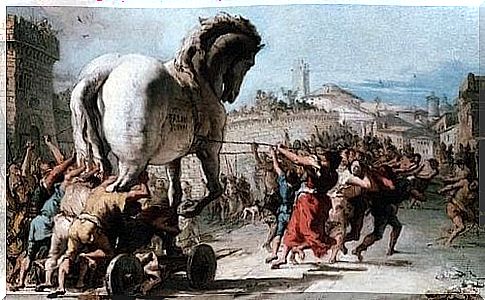The Metaphors Of The Fight Against Terrorism

The fight against terrorism is called the fight against terrorism. States, as well as security forces and organs, are the main actors carrying out this task. Terrorism is a constantly changing phenomenon. Also, the fight against terrorism must adapt to new forms of terrorism if it is to be effective. It is complex and difficult to interpret. This is why the use of metaphors is very widespread to understand it.
Metaphors are literary figures in which a word or phrase represents a different object or idea suggesting a similarity or analogy. The use of metaphors makes it possible to understand complex phenomena in a simple way. However, metaphors simplify them as well and provide a false sense of complete understanding. So although they help to better understand the events they represent, they also erase other concepts that are left out. Indeed, they are incompatible with the metaphor.

The fight against terrorism as a “war”
The metaphor of war indicates that it occurs between states. It shows that the enemy is an identifiable national entity opposed to our nation. So , the existence of both being impossible, one of them must disappear. Indeed, you will never be able to reach an agreement. In other words, it is a zero-sum conflict, the victory of one supposes the defeat of the other. The enemy wants to destroy us. Therefore, we must defend ourselves by conquering or destroying its territory.
In addition, being in a state of war has other connotations. For example, national unity and mobilization in support of the cause. In this way, those who criticize are seen as anti-patriots or traitors. Likewise, war involves values such as solidarity, heroism, courage and sacrifice. And, of course, God is on our side; the moral dimension is therefore clear. Obviously, wars will be won by military force. Also, the Head of State must concentrate all his power, which can lead to restricting freedoms.
Counterterrorism as “law enforcement”
Law enforcement and war are two ways of protecting the citizens of a country. The choice of one or the other depends on the magnitude of the threat. While the metaphor of war emphasizes the enemy, the law focuses on crime.
The law enforcement metaphor focuses on the culprits and does not tolerate collateral damage such as war. Therefore, the costs are lower. In addition, instead of killing, the penalty is usually a prison term. This way, if it is wrong, the damage caused is less than in wartime.
The fight against terrorism as “containment of a social epidemic”
The previous two metaphors deal with manifestations of violence, but not with the factors that provoked them. The metaphor of the social epidemic uses the epidemiological triad. It is made up of an external agent, a susceptible host and an environment that brings them into contact. Moreover, the vector or the emitter is in this same space. In the context of terrorism, the agents are the terrorists while the vectors are the conduits used to propagate ideology. Thus, the environment would favor activism, such as conflict or political repression.
This metaphor of the fight against terrorism as a social epidemic also has other implications. For example, there are people who are immune. These are protected from agents due to motivations such as psychological robustness or social support. The fight against terror would mainly aim to avoid contagion. Here, the radical ideology would correspond to the agent or the virus.

The fight against terrorism as a program of “reduction of prejudices”
The three previous metaphors on the fight against terrorism saw it as an external problem that aroused the need to address it. However, the prejudice reduction metaphor takes into account the interaction between two communities whose conflict can generate terrorism. So this analogy represents a group of people with negative attitudes towards another group.
That is why it would be good to convert these behaviors. Indeed, in other words, it will reduce prejudice. Eliminating erroneous perceptions and building a common identity would therefore be the objectives of the fight against terrorism underlying this metaphor. The maximum representation of the latter is the contact between the members of the different groups in conflict. In summary, in addition to simplifying and helping to understand, metaphors have bigger implications. We must therefore be careful when we use them to interpret reality.










